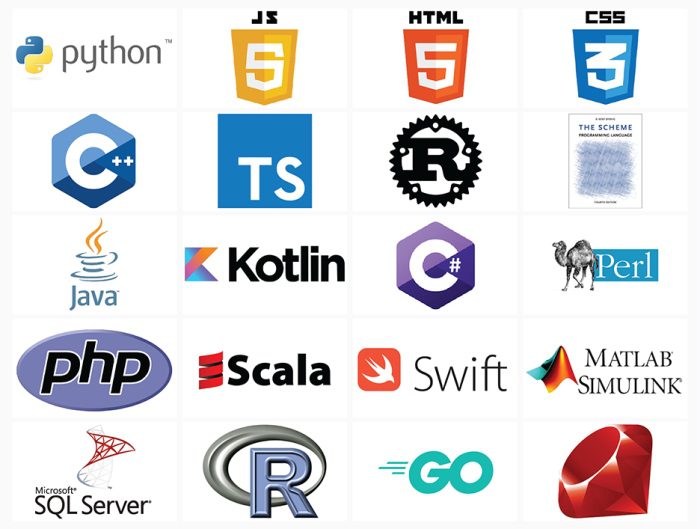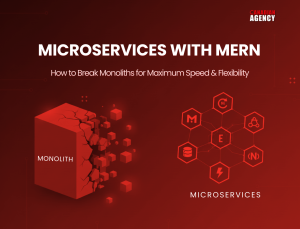The Internet of Things (IoT) is transforming industries through connected devices and sensors collecting vast amounts of data. Statista forecasts global IoT-connected devices to surpass $29 billion in 2030 as more and more businesses adopt IoT solutions. This prediction underlines a massive demand for developers skilled in the Top Programming Languages for the IoT, tailored for IoT applications like automation, tracking, and analytics.
This article explores the top programming languages developers should master to build the future of IoT. With insights into key capabilities, use cases, and pros and cons, you’ll have clarity on the top coding skills for IoT app development through 2024 and beyond.
Overview of the Internet of Things
The Internet of Things (IoT) refers to the network of interconnected physical objects and devices that are embedded with sensors and other technologies to enable them to connect and operate autonomously. IoT integrates hardware components like sensors and actuators with internet connectivity and software intelligence to collect, analyze, and distribute data that can help monitor, manage, and control devices and processes.
IoT applications span industries from manufacturing to transportation, energy, agriculture, buildings, wearables, and smart homes. Key capabilities enabled by IoT include real-time analytics, remote control, predictive maintenance, autonomous operation, and more. For example, an IoT-connected vehicle can send diagnostic data for preventive fixes, while a smart home system can optimize energy usage.
As IoT adoption grows, a robust data management framework and connectivity infrastructure is essential to counter the massive influx of structured and unstructured data from millions of devices. Companies also need to assess security vulnerabilities and privacy concerns associated with collecting vast amounts of sensor data.
All in all, IoT presents the game-changing potential to drive efficiencies, uncover insights, and disrupt traditional business models across industries.
Here, I have compiled a list of some well-known IoT devices to illustrate the mainstream adoption of this technology:
1) Smart Thermostats
2) Wearable Health Trackers
3) Automated Cars
4) Smart Home Security Systems
5) Smart Refrigerators
6) Industrial Sensors
7) Connected Health Monitors
8) Smart Lighting Systems
9) Home Automation Devices (Smart Plugs, Smart Locks)
10) Agricultural Monitoring Systems

Characteristics of IoT
Now that we have covered the definition of IoT and the industries that have adopted this technology, it’s time to dig into the main features that have resulted in its widespread adoption.
1) Connectivity
The fundamental feature of IoT is the connectivity of physical objects and devices via internet protocols like WiFi, Bluetooth, LAN, or LPWAN. This allows remote access, control, and data exchange, making IoT devices so useful.
2) Ubiquity
With affordable sensors and internet availability expanding, IoT is bringing connectivity to more processes, devices, and environments, including homes, factories, vehicles, and public spaces.
3) Intelligence
IoT devices contain embedded processors and algorithms enabling local analysis and automation. They don’t solely rely on the cloud for all computation. This edge intelligence drives faster and smarter insights.
4) Sensors
IoT devices have sensors with the primary role of collecting useful data. Small-size sensors like accelerometers, pressure sensors, and others are key to collecting relevant real-time data on device parameters, environmental conditions, and user behaviors.
5) Reliable Data
The massive amount of data generated by IoT sensors and devices is a key asset and must be stored, processed, and analyzed to extract value using Big Data analytics. This data is the key for further processing.
6) Interoperability
The diverse hardware and software components in IoT systems must smoothly interoperate through standardized protocols and architectures. This interplay is the key to the overall connectivity between the hard and software components.
7) Agility
Programming tools like Python and Node-RED facilitate rapid IoT application development and enable pivoting based on evolving needs. Consequently, this agility drives innovation, resulting in faster operations.
8) Scalability
It is a well-known fact that IoT solutions are designed to handle hyper-growth in sensors and data volumes. This scalability is of paramount significance since the deployments of IoT devices expand across locations, assets, and processes.
9) Security
Given that IoT devices deal with large amounts of data, robust security measures are given utmost priority. Therefore, encryption, access control, data security, authentication, and other measures are imperative to counter the threat of cyber-attacks.
10) Automation
Automation is the key to enhanced productivity of IoT devices. Insights derived from IoT data analysis can drive automated and predictive control of processes and devices, eliminating tedious human effort. Thanks to the automation of several tasks, efficiency is enhanced, and the time required for the completion of the operation is reduced.
List of TOP programming languages for IoT development
The selection of a peculiar language for IoT development is critical to the smooth operation of any IoT device. Every IoT device has certain needs that demand a particular skill level. It’s time to analyze some of the best programming languages that IoT developers should leverage:
1) C
2) C++
3) Python
4) Java
5) JavaScript
6) Node.js
7) Rust
8) Go
9) Swift
10) Lua
11) Ada
12) PHP
13) MATLAB
14) Julia
15) Swift for TensorFlow

1) C
Description: C is the foundational language for embedded systems, allowing direct memory control and hardware access. Its efficiency and lightweight nature make it the preferred choice for devices with limited resources in IoT development.
Applications: Embedded systems, real-time operating systems, and IoT devices with limited resources.
2) C++
Description: As an extension of C, C++ provides object-oriented features and maintains hardware-level efficiency. It’s suitable for complex IoT systems and applications needing high performance.
Applications: Complex IoT systems, gateway devices, and IoT applications demanding high performance.
3) Python
Description: Renowned for its simplicity and rapid development, Python is versatile with a plethora of libraries, perfect for prototyping and developing IoT applications requiring quick turnaround.
Applications: Prototyping, data analytics, machine learning, and IoT applications that require quick development.
4) Java
Description: Java is a versatile language that offers platform independence. It’s particularly well-suited for developing middleware and IoT applications on resource-rich devices.
Applications: Middleware for IoT applications, Android-based IoT devices, and gateways.
5) JavaScript
Description: JavaScript is ideal for creating IoT applications on the web, emphasizing web development and user interfaces for IoT devices.
Applications: Building IoT applications with web interfaces and cloud services
6) Node.js
Description: Based on JavaScript, Node.js executes server-side JavaScript code. It’s perfect for real-time IoT applications and back-end development.
Applications: Real-time applications, IoT server-side solutions, and data processing
7) Rust
Description: Rust is a language that emphasizes safety features and high performance, making it promising for industrial IoT and applications that demand both safety and speed.
Applications: IoT devices and applications requiring both safety and performance, like industrial IoT.
8) Go (Golang)
Description: Known for its simplicity, concurrency, and scalability, Go is suitable for high-performance IoT systems, including server-side infrastructure and cloud services.
Applications: IoT devices, server-side infrastructure, and cloud-based services.
9) Swift
Description: Primarily used in iOS and macOS ecosystems, Swift is great for IoT applications and devices within Apple’s platforms.
Applications: iOS-based IoT applications and devices, health monitoring devices.
10) Lua
Description: Known for its lightweight nature and ease of integration, Lua is commonly used in embedded systems, real-time applications, and IoT devices.
Applications: Embedded systems, IoT devices, and real-time applications.
11) Ada
Description: A structured, type-safe language suited for safety-critical IoT systems like defense systems and aerospace applications.
Applications: Aerospace, defense systems, and safety-critical IoT applications.
12) PHP
Description: Mainly for web development, PHP can be employed for IoT projects needing web connectivity.
Applications: Building IoT applications with web interfaces and cloud services.
13) MATLAB
Description: Widely used in engineering and scientific fields, MATLAB is perfect for IoT applications requiring mathematical support.
Applications: IoT applications involving data analysis and mathematical modeling.
14) Julia
Description: Julia is a high-performance language suited for scientific and mathematical tasks in IoT systems.
Applications: IoT devices involving data science, simulation, and scientific computation.
15) Swift for TensorFlow
Description: An extension of Swift designed for machine learning applications in IoT systems, especially on Apple platforms.
Applications: IoT devices involving machine learning and edge computing.
Summary
With more than 13 billion IoT devices across the globe, the field of IoT application development is wide open for enthusiasts to explore. In the domain of IoT development, there are a host of programming languages utilized for varying purposes. This blog underscored some of the Top Programming Languages for the IOT to help the readers.




